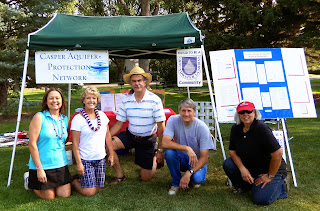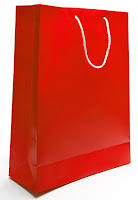by Jennifer Wemhoff, The Groundwater Foundation
The door is about to close on 2016. Here's a look back on 10 things that happened at The Groundwater Foundation this year:
1. Our mission was revamped and refocused: We connect people, businesses, and communities through local groundwater education and action, making us all part of the solution for clean, sustainable groundwater.
2. Amazing volunteer teams across the U.S. were recognized for local, proactive efforts to educate their communities and protect groundwater through the Groundwater Guardian program.
3. The Nebraska MEDS (Medication Education on Disposal Strategies) Coalition, which The Groundwater Foundation is a founding member, worked with nearly 300 pharmacies across Nebraska to take back thousands of pounds of unwanted or expired medication for proper disposal, keeping them out of water supplies.
 4. The Hydrogeology Challenge event created for Science OIympiad (SO) was featured in the 2016 National Tournament. The Challenge has been adapted for use in classrooms and extracurricular activities beyond SO.
4. The Hydrogeology Challenge event created for Science OIympiad (SO) was featured in the 2016 National Tournament. The Challenge has been adapted for use in classrooms and extracurricular activities beyond SO.
5. Two new members joined The Groundwater Foundation's board of directors, Chris Barnett of the Marion County Wellfield Education Corporation in Indianapolis, IN and Kirk Welch of the North Plains Groundwater Conservation District in Dumas, TX.
6. The Groundwater Foundation's Twitter account topped 4,300 followers, and Facebook went over 2,300. We also ventured into the world of Instagram.
7. The Awesome Aquifer Kit was adopted as part of the K-5 science curriculum in The Groundwater Foundation's hometown school system, Lincoln Public Schools.
8. A new collaboration with University of Nebraska-Lincoln's Science Literacy includes The Groundwater Foundation as part of an effort to educate secondary educators.
9. Green spaces across the U.S. participated in the Green Site program and received designation for managing their site with groundwater in mind.
10. Sara Brock joined the groundwater team as Program Manager, heading up the Groundwater Guardian program, youth programs, and others.
We're glad to have you as a partner in our mission and in protecting groundwater. Cheers to groundwater in 2017!















